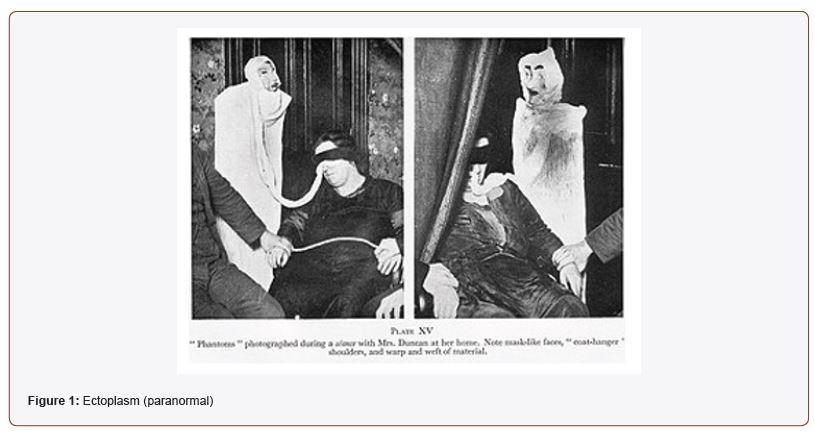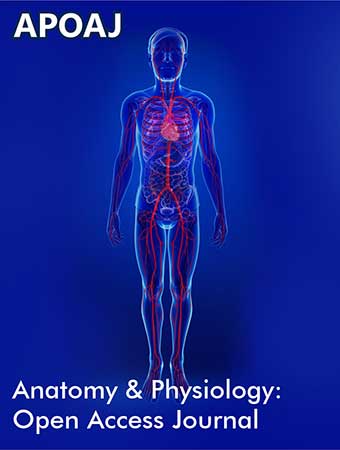 Opinion Article
Opinion Article
On the Composition of Ghosts
James T Struck*
A French American Museum of Chicago, Dinosaurs Trees Religion and Galaxies, NASA, USA
James T Struck BA, BS, AA, MLIS, A French American Museum of Chicago, Dinosaurs Trees Religion and Galaxies, NASA, PO BOX 61Evanston IL 60204, USA
Received Date: November 01, 2023; Published Date: November 16, 2023
Introduction
Linguistics on the word ghost show they were once linked to a Flemish word gast and German word gas for being scared. Ghosts were linked to being scared of sounds linked to Old English words.
Discussion
The height of the Ghost movement was the spiritualist move ment linked to the 3 Fox Sisters of Lilly Dale in the Southwestern part of New York State. The Spiritualist movement was linked to a worldwide movement linked to about 8 million people in the late 19th century in Brazil, New York state and Arthur Conan Doyle. Followers were Allen Kardec and parts of Brazil and Harry Houdini who attended séances to speak the dead. One of the studies of ghosts involved Ectoplasm.

Helen Duncan was well known for using dolls and other props as ectoplasm in her séances. Ectoplasm (from Greek ektos ‘outside’ and plasma ‘something formed or molded’) is a term used in spiritualism to denote a substance or spiritual energy “exteriorized” by physical mediums. It was coined in 1894 by psychical researcher Charles Richet. Although the term is widespread in popular culture, there is no scientific evidence that ectoplasm exists and many purported examples were exposed as hoaxes fashioned from cheesecloth, gauze or other natural substances. Ghosts were and are linked to common characteristics.
Common Attributes
Another widespread belief concerning ghosts is that they are composed of a misty, airy, or subtle material. Anthropologists link this idea to early beliefs that ghosts were the person within the person (the person’s spirit), most noticeable in ancient cultures as a person’s breath, which upon exhaling in colder climates appears visibly as a white mist. This belief may have also fostered the metaphorical meaning of “breath” in certain languages, such as the Latin spiritus and the Greek pneuma, which by analogy became extended to mean the soul. In the Bible, God is depicted as synthesizing Adam, as a living soul, from the dust of the Earth and the breath of God. Ghosts are also linked to common language of gast meaning a sound in Flemish and German.
Connected the Term Gast
“The English word ghost continues Old English gāst. Stemming from Proto-Germanic *gaistaz, it is cognate with Old Frisian gāst, Old Saxon gēst, Old Dutch gēst, and Old High German geist. Although this form is not attested in North Germanic and East Germanic languages (the equivalent word in Gothic is ahma, Old Norse has andi m., önd f.), it appears to be a dental suffix derivative of pre-Germanic *ghois-d-oz (‘fury, anger’), which is comparable to Sanskrit héḍas (‘anger’) and Avestan zōižda- (‘terrible, ugly’). The prior Proto-Indo- European form is reconstructed as *ǵʰéys-d-os, from the root *ǵʰéys-, which is reflected in Old Norse geisa (‘to rage’) and *geiski (‘fear’; cf. geiskafullr ‘full of fear’), in Gothic usgaisjan (‘to terrify’) and usgaisnan (‘to be terrified’), as well as in Avestan zōiš- (cf. zōišnu ‘shivering, trembling’).
Besides denoting the human spirit or soul, both of the living and the deceased, the Old English word is used as a synonym of Latin spiritus also in the meaning of “breath” or “blast” from the earliest attestations (9th century). It could also denote any good or evil spirit, such as angels and demons; the Anglo-Saxon gospel refers to the demonic possession of Matthew 12:43 as se unclæna gast. Also from the Old English period, the word could denote the spirit of God, viz. the “Holy Ghost”.
Conclusion
We can conclude ghosts are composed of sounds and airy breath like gas like material. The one advance we make in ghost science is that ghosts were commonly linked to breath, spirit, gas or airy materials. Ghosts were also linked to sound and gas. We can say we advanced the theory of ghost science by saying ghosts were composed of sound, gas, spirit. Air, and being scared.
Conflict of Interest
None.
Acknowledgment
None.
- Coccyx bone accessed from widkipedia.org accessed 10/22/2023
References
-
James T Struck*. On the Composition of Ghosts. Anat & Physiol Open Access J. 1(4): 2022. APOAJ.MS.ID.000516.
-
Ghost, human spirit, spiritualism
-

This work is licensed under a Creative Commons Attribution-NonCommercial 4.0 International License.






